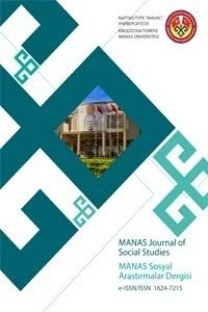REDEFINING DIPLOMACY IN THE 21ST CENTURY & EXAMINING THE CHARACTERISTICS OF AN IDEAL DIPLOMAT
___
Aruz, J., Benzel, K. and Evans, J.M. (2008). Beyond Babylon: Art, Trade, and Diplomacy in the Second MillenniumB.C. New Haven and London: New York University Press.Barston, R. P. (2014). Modern diplomacy. New York: Routledge.
Benedick, R. E. (1998). Diplomacy for the Environment, Conference Report on Environmental Diplomacy, p 3- 12.American Institute for Contemporary German Studies: https://www.aicgs.org
Berridge, G. R., Keens-Soper, M., Otte, T. G. (2001). Diplomatic Theory from Machiavelli to Kissinger. London: Palgrave Macmillan.
Berridge, G. R., James, A. (2003). A Dictionary of Diplomacy. London: Palgrave Macmillan.
Bjola, C., Holmes, M. (2015). Digital Diplomacy: Theory and Practice. Routledge.
Bloom, W. (1990). Personal Identity, National Identity and International Relations. New York: Cambridge University Press.
Bull, H. (2012). Anarchical Society: A Study of Order in World Politics. London: Palgrave Macmillan.
Eilers, C. (ed). (2009). Diplomats and Diplomacy in the Roman World. Brill Publishing: Leiden and Boston.
Frost, M. (1996). Ethics in International Relations: A Constitutive Theory. Cambridge: Cambridge University Press.
Fukuyama, F. (1989). The End of History?. The National Interest, (16), 3-18.
Gore-Booth, L. (ed). (1979). Satow's Guide to Diplomatic Practice. London and New York: Longman.
Haidar, S. (2015). A Good Example of Summit Diplomacy. The Hindu: http://www.thehindu.com
Hartshorn, J. E. (1973). Oil Diplomacy: The New Approach. The World Today, 29(7), 281-290.
Hocking, B. (1999). Introduction Foreign Ministries: Redefining the Gatekeeper Role. In Foreign Ministries. London:Palgrave Macmillan.
Huntington W. (1911). The True Meaning of Dollar Diplomacy. The Advocate of Peace (1894-1920), 73(7): 160-161
James, C. (1994). Gunboat Diplomacy 1919-1991. Political Applications of Limited Naval Force. Hampshire: St.Martin’s Press Inc.
Jönsson, C., Hall, M. (2005). Essence of Diplomacy. London: Palgrave Macmillan.
Knowlton, B. (2013). Appointing Political Friends to be Ambassadors. New York Times: https://www.nytimes.com
Kopp, H. W., Gillespie, C. A. (2011). Career Diplomacy. Washington, DC: Georgetown University Press.
Kraft, H. J. S. (2002). Track Three Diplomacy and Human Rights in Southeast Asia: the Asia Pacific Coalition forEast Timor. Global Networks, 2(1), 49-64.
Levitt, T. (1993). The Globalization of Markets. Readings in International Business: A Decision Approach. Cambridge: MIT Press.
Liebich, A. (2007). What in the World is Roma Diplomacy?. Roma Diplomacy. New York, Amsterdam and Brussels:Idebate Press.
Machiavelli, N. (2008). The Prince. Indianapolis, Cambridge: Hackett Publishing Company.
Mapendere, J. (2005). Track One and a Half Diplomacy and the Complementarity of Tracks. Culture of Peace Online Journal, 2(1), 66-81.
Marková, I., Gillespie, A. (Eds.). (2011). Trust and Conflict: Representation, Culture and Dialogue. Routledge.
Montville, J. V. (2006). Track Two Diplomacy: The Work of Healing History. Whitehead J. Dipl. & Int'l Rel., 7, 15.
Morgenthau, H. J. (1948). Politics Among Nations: The Struggle For Power And Peace. New York: Alfred A.Knopf.
Mynarova, J. (2007). Language of Amarna-Language of Diplomacy: Perspectives on the AmarnaLetters. Prague: Czech Institute of Egyptology.
Neumann, I. B. (2005). To Be a Diplomat. International Studies Perspectives. 6.1: 72-93.
Nicolson, H. (1950). Diplomacy. London, New York, Toronto: Oxford University Press.
Nye, J. S. (2004). Soft Power: The Means to Success in World Politics. New York: Public Affairs.
Onuf, N. (1989). World of Our Making. Columbia: University of South Carolina Press.
Rana, K. S. (2013). The Contemporary Embassy: Paths to Diplomatic Excellence. London: Palgrave Macmillan.
Smith, H. A., Minear, L. (2007). Humanitarian Diplomacy: Practitioners and Their Craft. United NationsUniversity Press.
Weisbrode, K. (2014). Old Diplomacy Revisited: A Study in the Modern History of Diplomatic Transformations. New York: Palgrave Macmillan.
Wendt, A. (1999). Social Theory of International Relations. Cambridge: Cambridge University Press.
Wendt, A. (2003). Why a World State is Inevitable. European Journal of International Relations. 9. 4: 491-542.
www.academyofdiplomacy.org
www.afsa.org
www.dictionary.cambridge.org
www.economist.com
www.history.state.gov
www.lapres.net
www.un.org
www.unfccc.int
- ISSN: 1694-7215
- Yayın Aralığı: 4
- Başlangıç: 2001
- Yayıncı: KIRGIZİSTAN-TÜRKİYE MANAS ÜNİVERSİTESİ
İLKOKUL ÖĞRENCİLERİNİN BAŞARI DUYGULARI VE BENLİK SAYGILARININ İNCELENMESİ
ÇİĞDEM ALDAN KARADEMİR, Özge DEVECİ
Selahattin AVŞAROĞLU, Mehmet ULUBEY
TAŞKÖPRÜLÜ-ZÂDE’YE GÖRE ÖĞRETMENLİK VE ÖĞRENCİLİK AHLAKI
Serhat YÜKSEL, Hasan DİNÇER, Şenol EMİR
TÜKETİCİLERİN RASYONEL VE HEDONİK MARKA ALGILARININ MÜŞTERİ BAĞLILIĞI ÜZERİNDEKİ ETKİSİ
ÜNİVERSİTE ÖĞRENCİLERİNİN SABIR EĞİLİM DÜZEYLERİNİN İNCELENMESİ
Yavuz ERCAN GÜL, NADİR ÇELİKÖZ
İNTERNET KAFE, GENÇLİK VE OYUN ETKİLEŞİMİ: ALT KÜLTÜR BAĞLAMINDA BİR İNCELEME
MUTFAK ŞEFLERİNİN TEKNOLOJİYE HAZIR BULUNUŞLUK (TRI) DURUMLARININ DEĞERLENDİRİLMESİ
İDEOLOJİ VE SANAT İLİŞKİSİ BAĞLAMINDA SOVYET ANITSAL PROPAGANDASI
